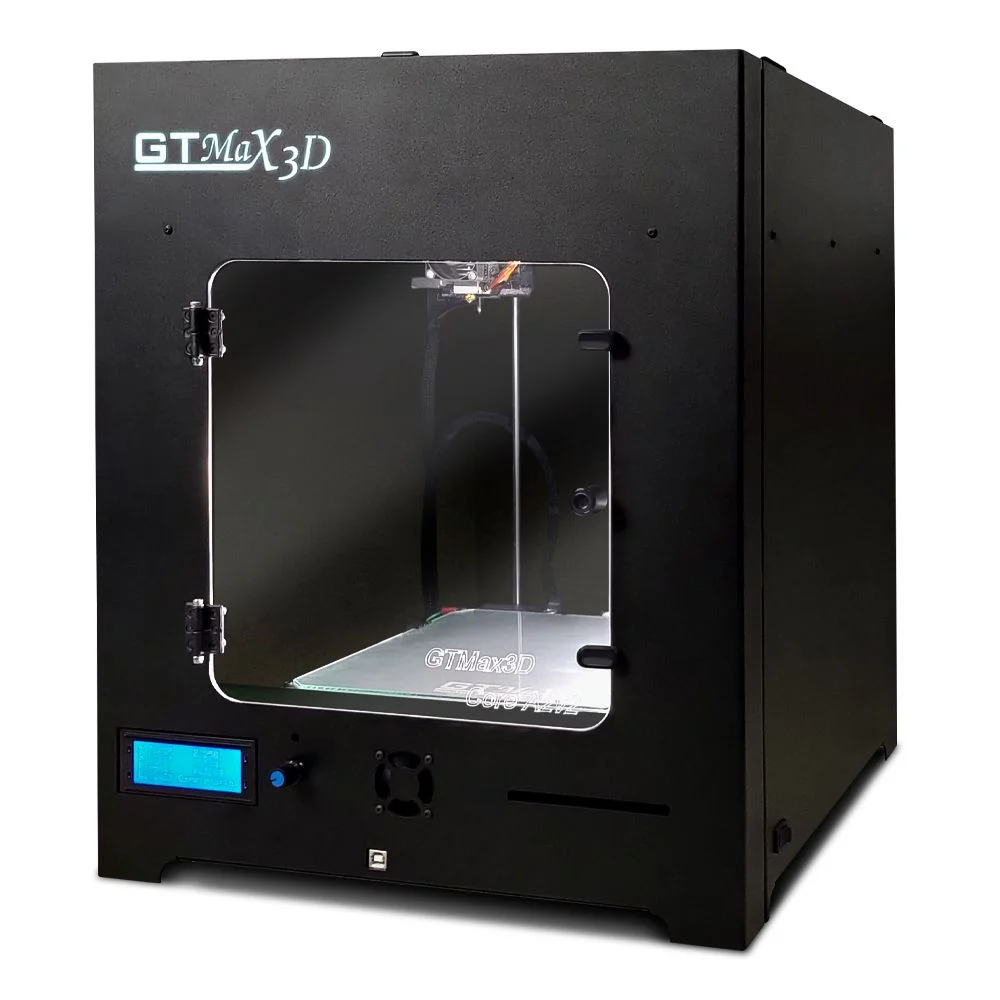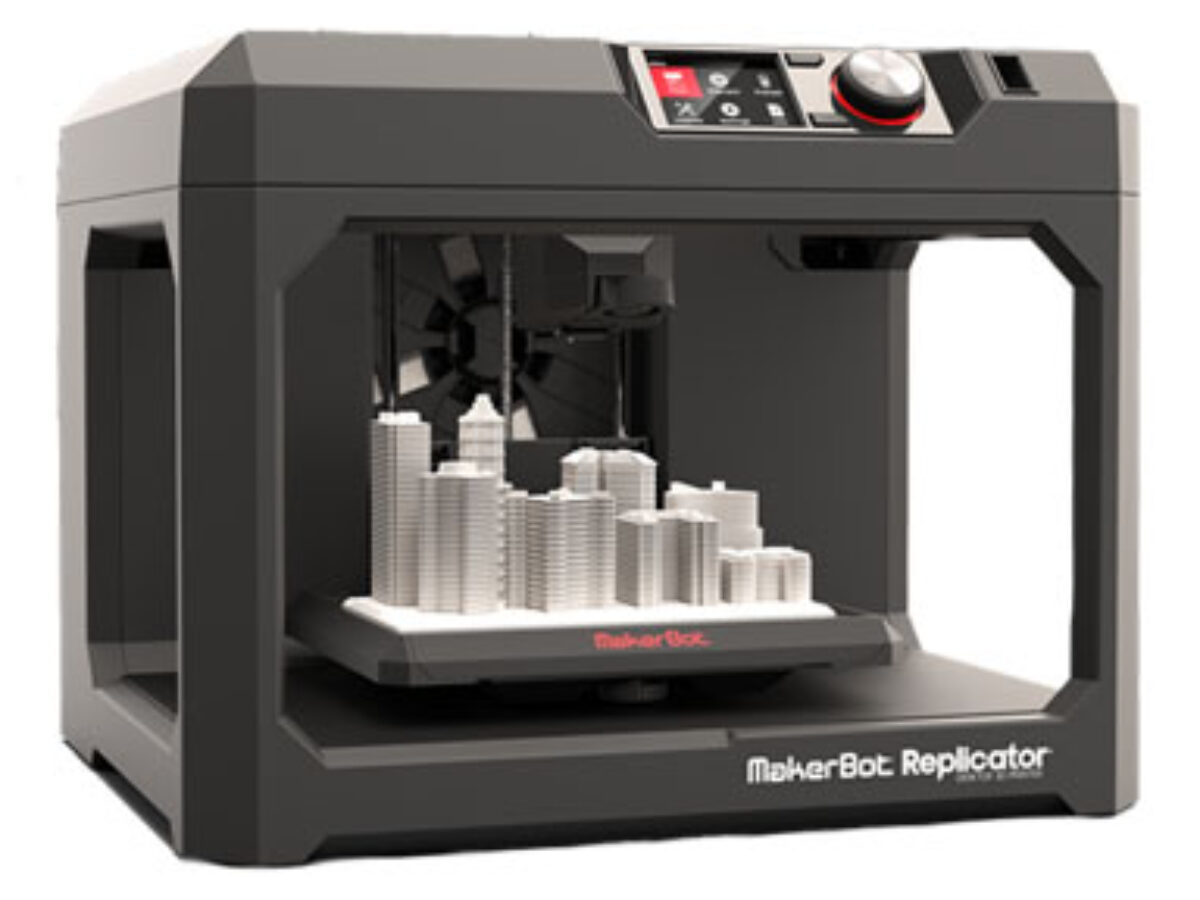Compare Core A2V2 vs Replicator Plus
Comparison between the best 3D printers
Choose the best 3D printer at the best price. The cheapest 3D printers are here.
Buy a 3D printer here with 3D Fila.
 |
 |
|
| Model | Core A2V2 |
Replicator Plus |
| Printing Material | Filament | Filament |
| Buy Filament for GTMax Core A2V2 | Buy Filament forMakerbot Replicator Plus | |
| Estimated price | $684,00 | $2099,00 |
| Manufacturer | GTMax | Makerbot |
| Release Year | 2019 | 2016 |
| Print Volume [mm] | 220x220x240 | 165x295x195 |
| Printer Size [mm] | 425x460x512 | 410x528x441 |
| Weight [kg] | 18,3 | |
| Power Loss Recovery | YES | YES |
| Enclosed printer | YES | NO |
| Bed Leveling | Automatic | |
| Filament End Sensor | YES | YES |
| Bed type | Heated | |
| Power supply system | Bowden | Bowden |
| Standard nozzle | 0,4 | 0,4 |
| Maximum Nozzle Temperature [°C] | 295 | 230 |
| Maximum Bed Temperature [°C] | 135 | |
| Maximum printing speed [mm/s] | 150 | 150 |
| Filament holder | YES | YES |
| Camera for supervision | NO | NO |
| Recommended filaments | PLA, PETG, Tritan, Flex, ABS | PLA |
| Recommended slicers | Cura, Simplify, Slic3r, IdeaMaker | MakerBot Print Software |
| Maximum Resolution [mm] | 0,05 | 0,1 |
| Processor | ||
| Display | Mono | |
| Power Supply | 110/220V / 240W | |
| Connectivity | SD / USB | USB / Wi-Fi |
| Operating systems | Windows, Mac, Linux | Windows, Mac, Linux |
| Date of registration in the system | 2022-11-12 | 2022-11-15 |
| Release date | 2019 | 2016 |
| Extra features | The GTMax3D ProCore A2v2 is a compact and robust 3D printer with a printing area of ??220 x 220 x 240 mm. It offers high print quality, ranging from 0.05 mm to 0.32 mm. Its features include automatic filament detection and changing, travel speed of up to 300 mm/s, and a heated aluminum bed with a glass top. It has automatic bed leveling with 16 points and an all-metal hotend that reaches up to 298°C. The printer has a carbon steel frame with electrostatic painting, is automatic bivolt and has connectivity via USB and SD card. The Bowden system and core xy kinematics complete its advanced features. | The Replicator Plus printer is easy to use and has very good print quality. Its software is user-friendly and powerful, with USB, Ethernet, Wi-Fi and support for printing via pen drive. With a safe design for an open frame printer, it is relatively quiet. The Smart Extruder+ detects filament end and pauses printing automatically, in addition to notifying via apps. It has a large print volume, with a non-heated and coated print bed for easy removal of parts. It also has a webcam for remote monitoring of prints. |
| Support for multiple colors and materials (AMS and CFS) | NO | NO |
Notes * |
||
| Cost-benefit | 6 / 10 | 6 / 10 |
| Hardware | 2.5 / 10 | 2.5 / 10 |
| Tela | . | . |
| Print volume | 3 / 10 | 3 / 10 |
| Performance | 1 / 10 | 1 / 10 |
Conclusion |
| In comparing the Core A2V2 and the Replicator Plus 3D printers, several factors merit attention, particularly regarding features, performance, and cost-effectiveness. The Core A2V2, released in 2019, offers more modern specifications, including automatic bed leveling, a higher maximum nozzle temperature, and a heated aluminum bed that supports a wider range of filament types such as PETG and Flex. Its enclosed design enhances safety and temperature regulation during printing, which can be advantageous for working with materials that require stable conditions. The printer also boasts a relatively large print area, automatic filament detection, and a robust construction, making it a strong contender for high-quality outputs. On the other hand, the Replicator Plus, launched in 2016, is known for its user-friendly software and ease of operation. While it has a slightly larger print volume, its open-frame design, while safe, lacks the temperature control advantages of an enclosed printer. However, it does provide convenient connectivity options and features like the Smart Extruder+, which pauses printing automatically when filament runs out. From a price perspective, the Core A2V2 presents a considerably lower cost, which significantly enhances its value proposition, especially given its feature set that includes advanced print capabilities and heating elements. The Replicator Plus, despite its higher price, may appeal to users who prioritize ease of use and established brand performance, albeit at a premium cost. In conclusion, for those seeking an advanced, cost-effective 3D printer that accommodates various materials, the Core A2V2 emerges as the better option. Conversely, the Replicator Plus may suit users looking for a proven and user-friendly experience, albeit at a significantly higher investment. Ultimately, the choice depends on user priorities, whether they lean towards modern features and versatility or brand reputation and usability. |

